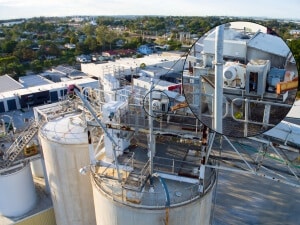Brisbane Drone Flying Regulations
September 11, 2017Establishing Accuracy in UAV Mapping: The Basics
September 11, 2017Examining your building for wear and tear at least once every year is not an option if you desire to catch deteriorations’ and water infiltrations issues before they get the chance to escalate into costly damages and hazardous conditions.
An impressive number of enterprises’ are utilizing drones for their visual inspections, since it’s a cost efficient and conscious mean to inspect high and inaccessible regions.
Advantages of drone inspections.
- A higher level of safety.
- Reduced downtime.
- Access to hard-to-reach regions.
- Detailed and sharp photographs of defects.
- A quick overview and assessment of every condition.
- Optimized production.
- Relatively cheaper.
Normally drone inspections are recommended in the following three categories;
-
Offshore constructions
The offshore environment is usually regarded as demanding and tough, and it’s imperative that faults and loss of production are kept to the minimum.
An illustration of a consignment comprising these elements is a flame inspection on an oil or gas platform, where the flame is still active. In such areas, drones collect images while production goes on unaffected.
-
Onshore Constructions
Usually, drones are constrained from flying to an altitude of more than 100 meters though most companies are authorized to perform inspections at heights higher than 100 meters.
Such inspections include hydro power plant or refinery inspections, and masts and chimneys’ at power stations. The other area obviously appropriate for drone inspections is bridges, regardless of whether they are on land or connecting islands.
-
Confined Areas
Confined areas such as fuel storage tanks, boilers at power plants, and so much more, are a comparatively new addition to the drone inspection category, but they are progressively becoming a commonplace.
Nonetheless, there are considerable setbacks when utilizing drones in restricted areas; these include propeller turbulence, reflection of radio signals, color nuances, and deprivation of ideal light conditions.
These setbacks’ are met by utilizing powerful LED lamps, therefore guaranteeing good picture quality with genuine and natural colors.
